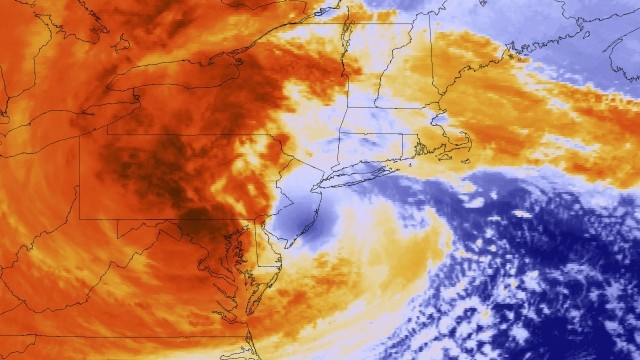Storm Sandy: New Jersey Nuclear Plant Declares Alert

The US Nuclear Regulatory Commission (NRC) has declared an alert at the Oyster Creek nuclear power plant in New Jersey as the storm Sandy made landfall in the US east coast states. Sandy has reportedly flooded vast areas across the eastern seaboard.
The Oyster Creek nuclear power plant declared the alert since the water level in the plant's water intake structure exceeded the "high water level criteria".
"Water level is rising in the intake structure due to a combination of a rising tide, wind direction and storm surge. It is anticipated water levels will begin to abate within the next several hours," the NRC said in a statement.
In addition to the Oyster Creek plant, several other nuclear power plants in the region could also get affected from the storm surge caused by Sandy. These mainly include Salem and Hope Creek reactors, Calvert Cliffs in Maryland, Limerick in Philadelphia, Peach Bottom, Susquehanna, Three Mile Island plants in Pennsylvania, Indian Point in New York and Millstone in Connecticut.
The emergency was reminiscent of the rising tsunami waters that invaded Japan's Fukushima Daiichi nuclear power plant following an earthquake in 2011, which led to the biggest nuclear disaster since Chernobyl in 1986.
None of the affected US nuclear power plants, however, have been shut down and their overall condition remains safe.
"No plants had to shut down as a result of the storm although several plants were already out of service for regularly scheduled refueling and maintenance outages. All plants remain in a safe condition, with emergency equipment available if needed and NRC inspectors on-site," NRC added.
According to NRC, nuclear power plant functioning has to be shut down under certain severe weather conditions. Though storm Sandy has left millions of people in New Jersey without power supply, the region's nuclear energy generating plants have emergency diesel generators to keep them going.
Although the Oyster Creek nuclear power plant is on alert, NRC said it had flood protection mechanisms above the predicted storm surge.
"The key components and systems are housed in watertight buildings capable of withstanding hurricane-force winds and flooding," it concluded.
© Copyright IBTimes 2025. All rights reserved.






















